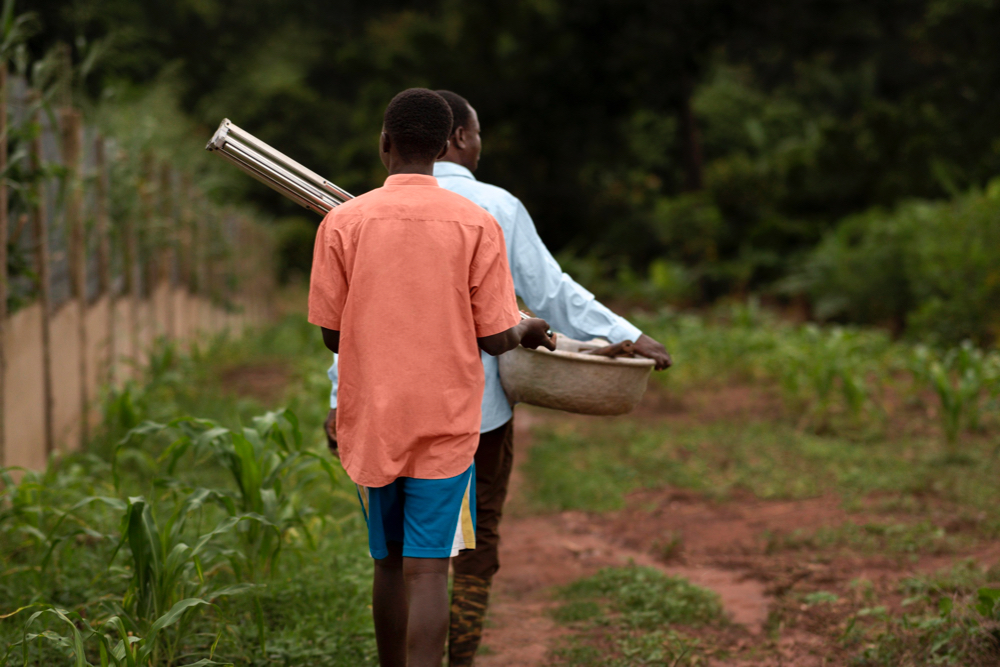The Africa-Europe adaptation partnership is facing significant challenges, with slow progress on the adaptation finance agenda at the heart of the issue. The optimistic rhetoric of “Two Unions, A Joint Vision” from the 6th European Union-African Union Summit in 2022 failed to reflect the underlying tensions. Africa’s frustration is growing due to the widening finance gap and lack of transparency, while the European Union (EU) — despite being the largest global provider of adaptation finance — appears increasingly fatigued by Africa’s criticism.
With COP29 in Baku on the horizon, overcoming barriers to adaptation cooperation is critical to building a more balanced and effective Africa-Europe partnership. The pressing question is how to enhance joint adaptation efforts, particularly from the EU, amid rising geopolitical tensions and shifting political priorities?
Adaptation finance gaps
Adaptation finance, which refers to the international support for vulnerable nations to address the adverse impacts of climate change by enhancing resilience and reducing risks in critical sectors like agriculture, water or infrastructure, is vital for African nations. Sub-Saharan Africa, one of the most climate-vulnerable regions globally, faces an average annual adaptation funding gap of $46 billion by 2030. Despite the Africa-EU partnership’s focus on adaptation, frustrations persist on the African side due to unmet finance promises and perceived imbalances in global climate priorities.
On the surface, European adaptation support appears robust, with the EU and its member states providing €28.5 billion in public finance and mobilising an additional €11.9 billion in private finance in 2022 – over 50% of which is allocated to adaptation and cross-cutting activities. A significant portion of this funding goes to Africa, making the EU bloc the largest climate finance contributor to the continent. Additionally, initiatives have been introduced such as the €1 billion Team Europe Initiative (TEI) to support adaptation in Africa, as part of the Global Gateway strategy aiming to mobilise €150 billion of investments in Africa by 2027. The European Fund for Sustainable Development Plus (EFSD+), one of the Global Gateway’s financial tools, uses blended finance and guarantees to support climate-related projects.
Despite these promising initiatives, the EU’s approach to adaptation faces criticism from African partners for lacking transparency. The allocation of funding for adaptation within broader cross-cutting activities, which also cover mitigation, is unclear. This makes it hard to assess actual adaptation spending. Limited transparency on adaptation-specific projects under EFSD+ further adds to uncertainty about the scale and impact of these investments. Moreover, financial instruments — particularly those aimed at engaging the private sector — often struggle to meet adaptation needs due to challenges in developing bankable projects. Compounding this, European countries use different accounting methods to track their climate finance, hindering consistent reporting and fueling distrust about the actual delivery of climate finance commitments. Furthermore, while the TEI on adaptation has provided an expenditure overview of the EU and a few EU member states’ adaptation projects, it has yet to establish a unified funding framework for new initiatives.
In addition, much of the EU’s climate finance targets middle-income countries, with limited attention given to Africa’s poorest and most vulnerable nations. For instance, the EU has signed green partnerships with Morocco, Egypt and South Africa, and is establishing ‘climate and energy policy dialogues’ with Kenya, Senegal and Nigeria. However, these engagements are predominantly focused on renewable energy transitions, energy infrastructure or decarbonisation efforts, rather than addressing broader adaptation needs such as agriculture, water resilience or disaster risk reduction. This energy-centric investment approach adds to the growing frustration, especially as the EU’s 2021 adaptation strategy explicitly promised to prioritise support for Africa’s poorest countries.
Operationally, diplomacy is hampered by both the EU and African Union’s high staff turnover, insufficient technical assistance and complexities in defining adaptation projects, which hinder effective collaboration on adaptation. Access to multilateral funds, such as the Green Climate Fund or the Adaptation Fund, is slowed by lengthy processes, and financial accountability remains weak. This makes it difficult to track resources from source to implementation on the ground.
(Geo)political shifts and EU fragmentation
Climate (adaptation) finance is losing relevance on multiple fronts. Within global fora, African least developed countries (LDCs) and small island developing states (SIDS) are often overshadowed by the BRICS bloc, which does not necessarily prioritise adaptation needs. Meanwhile, geopolitical dynamics, including Europe’s budgetary shifts towards Ukraine, defence and migration, risk diverting funds, including grants, meant for international cooperation and climate (adaptation) finance.
There is increasing fragmentation in European member states’ external climate agendas. For example, while Denmark is bolstering diplomatic ties with Africa and focusing on adaptation support, France will significantly cut its development aid budget. The Netherlands is also scaling back its international cooperation budget for Africa. These cuts pose serious challenges for the future of national – and European – climate (adaptation) finance commitments. Despite the EU’s Team Europe efforts, which involve implementing agencies, public development banks and development finance institutions, adaptation finance remains fragmented. European countries channel funds through a variety of bilateral and multilateral modalities. This complicates local-level adaptation efforts, which are further hindered by European partners’ top-down governance approaches.
While the re-election of European Commission president Ursula von der Leyen assures the continuation of the EU Green Deal, internal political shifts, including far-right gains in some European countries, threaten progressive climate action in the coming years. Issues like security and migration, heavily influenced by right-wing factions, along with concerns over European competitiveness, are likely to overshadow emissions reduction and climate finance efforts. At the same time, resources promised to adaptation abroad might be diverted toward resilience-building at home given the growing climate challenges within Europe itself, as highlighted by the recent European Climate Risk Assessment. The Mission Letter for Hadja Lahbib, Commissioner-Designate for Preparedness and Crisis Management, already shows an emphasis on domestic disaster preparedness, with less focus on its international dimension.
Domestic finance and debt
In 2022, the African Development Bank allocated 63% of its total climate finance – approximately $3.65 billion – to adaptation. Some African nations spend up to 9% of their national budgets to address climate extremes. However, African governments face severe challenges in mobilising domestic resources, primarily due to liquidity constraints and vulnerabilities related to sovereign debt.
In the 2023 Nairobi Declaration, African leaders called for systemic reforms to address the mounting debt crisis. They emphasise the need for international finance and sovereign debt architecture reform to support climate action, urging that these issues be integrated into the New Collective Quantified Goal (NCQG) on climate finance, a key agenda item at COP29. For instance, Kenya allocates 67% of its revenue to servicing debt, highlighting the severity of the crisis and the constraints that debt imposes on funding climate action.
Efforts within Africa-EU climate diplomacy are increasingly focused on innovative climate financing options, such as mobilising additional public and private capital and exploring tax reforms, as potential ways to boost adaptation funding. However, implementing these solutions is often challenging due to governance issues in Africa and other barriers. Additionally, the discussion remains a point of contention, with underlying concerns about ‘climate justice’, highlighting the need for fair and equitable solutions.
Building better EU adaptation support
Africa’s geopolitical significance is growing rapidly, driven by its expanding population, economic potential and increasing global influence. For the EU to position itself as Africa’s partner of choice, it must address the continent’s needs and unlock its vast potential, especially in the face of rising competition from China and Russia. This requires the EU to move beyond self-interest and offer a clear, value-driven partnership focused on mutual benefits and shared responsibility, particularly in tackling climate challenges. But how can the EU, alongside African partners, support building a framework in the short term that balances their distinct needs and governance structures?
Towards transparent adaptation finance
The EU must recognise that supporting climate adaptation in Africa directly bolsters Europe’s own resilience. Climate change does not respect borders, and its impacts in Africa — such as extreme weather, food insecurity or displacement — can have spillover effects on regional stability and migration flows, which, in turn, affect Europe. By framing climate adaptation as a shared interest, both regions can work together more effectively. Improving climate risk assessments is crucial in this process, as the lack of clear, targeted data on specific risks —such as droughts, floods or other hazards — often hinders action. More localised and precise assessments would enable the EU to tailor its support to Africa’s unique vulnerabilities, ensuring that cooperation efforts are better aligned with on-the-ground realities and needs.
The EU should work toward establishing a unified definition of climate finance to enhance coherence and transparency, as well as a harmonised system for adaptation accounting. While global consensus on climate finance definitions remains challenging — partly due to resistance from countries like the US — the EU can take the lead by aligning its internal practices. Collaborating with the International Capital Market Association to set adaptation standards and reporting metrics could further enhance this effort. The European Investment Bank has already harmonised its accounting methodologies with other Multilateral Development Banks to improve transparency in adaptation funding. This could serve as a blueprint for other climate finance providers.
Towards more (innovative) climate adaptation finance
Given ongoing budget pressures, the EU should pursue innovative solutions like debt-for-climate swaps to attract private sector investments and enhance its geopolitical influence. It can also champion bold global initiatives, such as a Global Wealth Tax, to mobilise private sector participation and leverage development finance institutions. Working with African nations to improve domestic revenue collection could generate essential resources for climate adaptation finance. Notably, Kenya and France, later joined by Senegal and Spain, launched the Global Solidarities Levies Task Force to explore innovative taxation mechanisms as potential new revenue streams for climate and development.
The EU must focus on expanding the donor base beyond OECD countries and strengthening ties with African LDCs and SIDS. The Global Gateway clearly sets the direction for the European Commission’s DG for International Partnerships, as evident from Commissioner-Designate Jozef Síkela’s mission letter. To fully harness the Global Gateway’s potential — particularly in adaptation, where its track record is weak — the EU must increase adaptation investments under the climate and energy pillar. The EU must also leverage the TEI on adaptation as a geopolitical tool to strengthen its position as a leading donor, particularly in Africa, and initiate new adaptation initiatives.
Towards stronger alliances
The EU should prioritise establishing more open, effective dialogues with African counterparts, strengthening political ties at the ministerial level and organising regular AU-EU ministerial meetings and College-to-College meetings on adaptation between European and African institutions. To build a mutually beneficial partnership, the EU must increase its presence at high-level events in Africa and reinforce region-to-region diplomacy on global platforms like the UN. Aligning European diplomacy with the African Group of Negotiators, the LDC Group and the Alliance of Small Island States will help ensure Africa’s voice is effectively represented in global climate discussions.
While the COP format may not always deliver major breakthroughs, COP29 presents a critical opportunity for Europe-Africa diplomacy to advance critical adaptation goals. Securing a strong Global Goal on Adaptation (GGA), with ambitious targets and clear indicators, and an extended timeline beyond 2030, is crucial to prevent it from becoming politically contentious. The EU should advocate for a dedicated 50% allocation of climate adaptation finance under the NCQG, ensuring that African vulnerable countries have the resources needed to build climate resilience. Past successes, such as COP17 in Durban (2011) and COP21 in Paris (2015), have shown that robust Europe-Africa collaboration can drive significant progress. The unique diplomatic space between these continents offers a vital platform to address shared challenges and co-create adaptation solutions.
About the Author
Hanne Knaepen is the head of ECDPM’s climate action and green transition team. She focuses on climate adaptation, resilience and a just transition.


